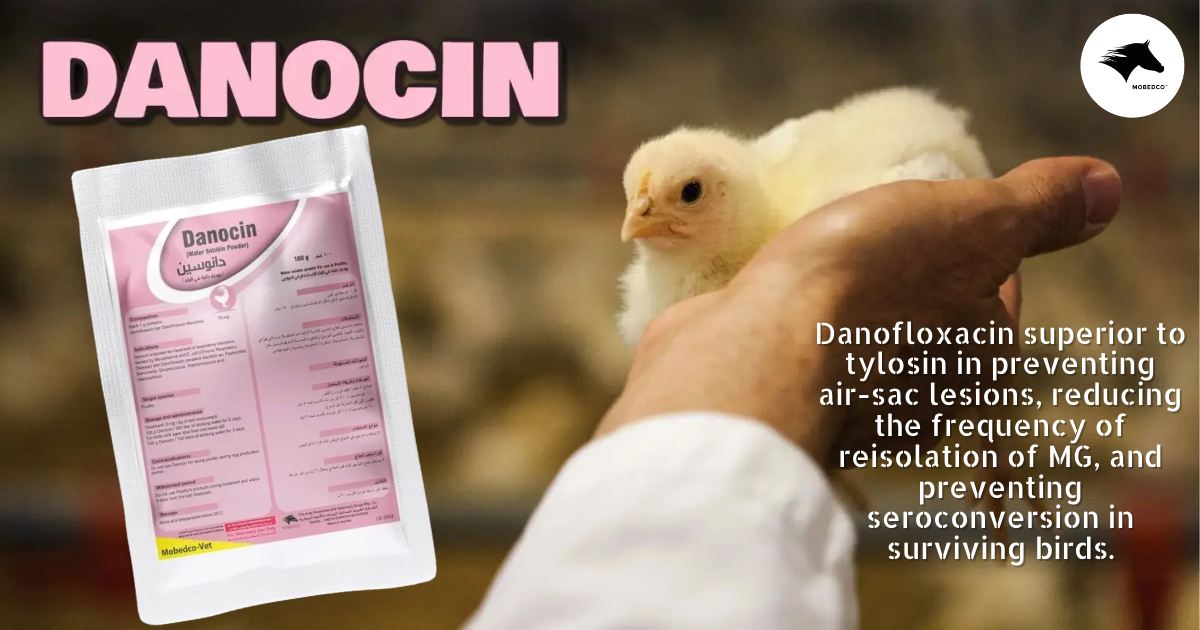Efficacy of danofloxacin in the therapy of mycoplasmosis in chicks

Danofloxacin is a broad-spectrum chemotherapeutic agent belonging to the 4th generation of fluoroquinolones.
The preparation is active against Gram-positive and Gram-negative microorganisms (Staphylococcus aureus, Streptococcus pyogenes, Esherichia soli, Enterobacteriaceae spp.., Pasteurella spp., Haemophilus spp., Actinobacillus spp., Brucella spp., Bordetella bronchiseptica, Proteus vulgaris, Pseudomonas aeruginosa, Salmonella spp. etc.), mycoplasma.
Danofloxacin is rapidly absorbed in the digestive tract due to its high bioavailability.
Its maximum concentration in the blood is reached after 3-6 hours on average, and the therapeutic concentration is maintained for 2 days.
Danofloxacin is partially metabolized in the liver and excreted from the body with urine and bile.
Danofloxacin has a high level of distribution. Thus, the concentration in tissues and organs is much higher than in serum. The organs with the highest concentration are the lungs, liver, kidneys, intestines, and muscles.
#Study Specific pathogen-free day-old chicks were inoculated with a virulent strain of Mycoplasma gallisepticum. Birds received either danofloxacin (50 ppm), tylosin (500 ppm), or no medication in the drinking water from 24 hours after infection for three days. The effects of medication on mortality, weight gain, serology, lesions, and reisolation of M gallisepticum 21 days following infection were studied. Treatment with danofloxacin and tylosin significantly decreased mortality and increased weight gain compared with infected unmedicated birds. Twenty-one days after infection, M gallisepticum was isolated from 96 percent of unmedicated birds compared with only 6 percent of danofloxacin-treated and 40 percent of tylosin-treated birds, and the percentage showing positive serological tests was reduced from 100 percent of unmedicated birds to 0 percent of danofloxacin-treated and 29 percent of tylosin-treated birds. In both cases, the proportion of positive birds from the danofloxacin-treated group was significantly lower than that from the tylosin-treated group. The occurrence of air sac lesions was also significantly lower in danofloxacin-treated than in tylosin-treated birds.











